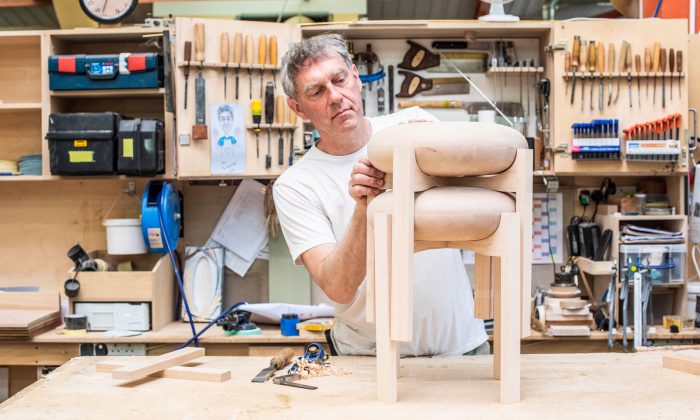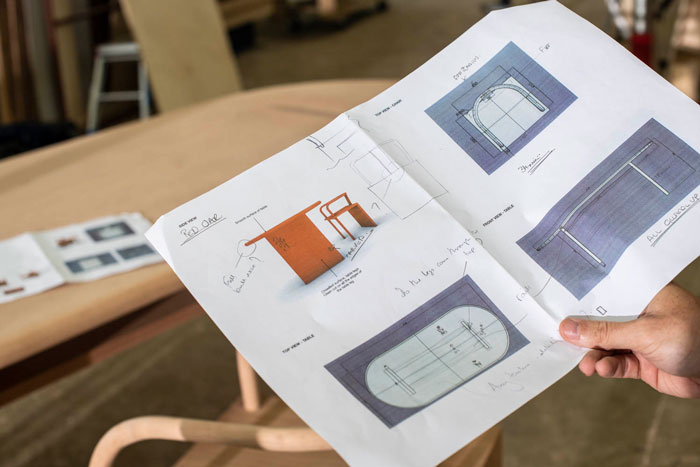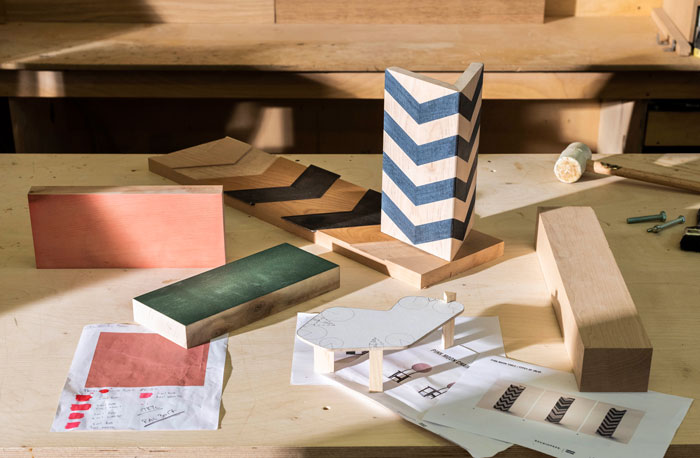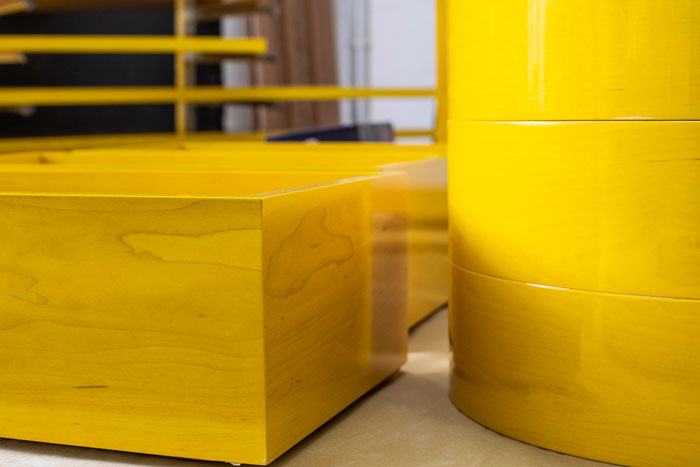Connected by wood
We’re all fairly used to meetings conducted via video conference call now. But what happens for makers, particularly those who work in teams and need to be hands on in their approach?
Recent London Design Festival project Connected, an initiative led by UK furniture makers Benchmark took the opportunity to explore this whilst simultaneously addressing our relationship to wood. It brings together a number of leading designers who are invited, perhaps even challenged, to work with 3 types of hardwood: Cherry, Maple and Red Oak.

Making of Nordic Pioneer Maria Bruun
Cherry and maple were staple woods used in the world of architecture and design back when craftsman Sean Sutcliffe founded Benchmark some 40 years ago. What’s more, he notes that at that time, oak and walnut were considered old-fashioned timbers to use on design projects. Yet somewhere along the way, the tables turned, with oak and walnut still the most popular woods with specifiers to this day. Connected attempts to shake the tree (pun intended) and highlight the many merits of cherry and maple woods as well as the seldom-used red oak. For Benchmark, it came into play only a year or so ago when the studio decided to experiment with it in comparison to the most standardised British and American white oak species.

Making of Humble Administrator Studio Swine
The thinking behind the project is pertinent, although perhaps more subtle than we might initially think. As we are all aware, the material choices we make have an impact upon the planet in numerous ways. Wood in general is, quite rightly, seen as an environmentally viable option for a whole manner of applications. But the team at Benchmark are keen to highlight a salient point that is arguably overlooked when choosing which wood to use on a project – following trends isn’t necessarily the most environmentally sound option. Sutliffe is keen to address the issue of “total forest usage” because “one thing that a forest can’t afford is for certain woods to come in and out of fashion. The forest grows how the forest grows, and we need to use all of those woods.”

Making of Pink Moon Studiopepe
When it comes to wood, the Benchmark team are used to carrying out all procedures in house, which means they can take a felled tree and transform it via cutting, CNC, turning, machining and hand processes. To add to this, they also have upholstery, metal, plastic, spraying and polishing facilities, meaning they can make a broad and numerous range of design objects.

Making of Candy Cubicle Sabine Marcelis
So what does it mean to work with wood, particularly during a global lockdown? And how can you get the best out of wood with sustainability at the heart of the process?
Jaime Hayon:
“With wood we’re going back to basics again. It’s a material that’s alive, that changes, that challenges you. It’s so sophisticated it’s actually like red wine. And, it’s been used by all cultures and all generations, from the use of making something so small as a spoon that will be delicate, to something gigantic like a building.”
Maria Bruun:
“Essentially my design came from my own need – I needed something that was mine. A station of reflection that I could leave and that everything would be as I left it. The folding table gave me the possibility of extending the space, to invite somebody in and to connect myself to the world again. I’m working with maple and what I like about it is that it is almost transparent in a way – it’s so light and white – so it can almost disappear in the space.”
Thomas Heatherwick:
“For me, wood has got that biophilic dimension where it’s something that you can look more and more and more at. What better core material could there be for something like this?”
Other designers involved in the project include: Ini Archibong, Maria Jeglinska, Sabine Marcelis, Sebastian Herkner and Studio Pepe.
Find out more about all the physical and online LDF events as well as the shows rebrand for the 2020 edition by creative agency Pentagram at the LDF website.




